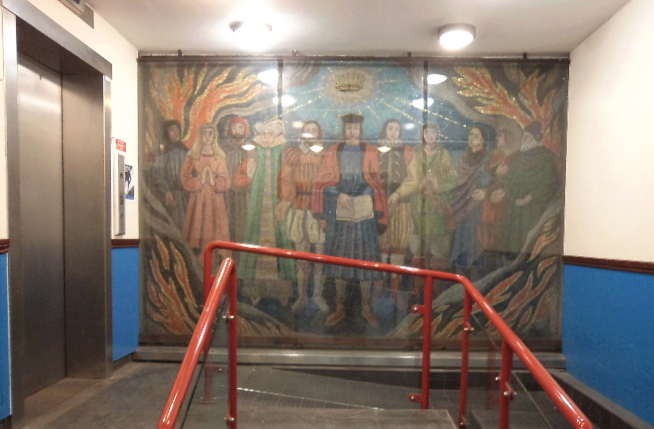Martyrs Mosaic
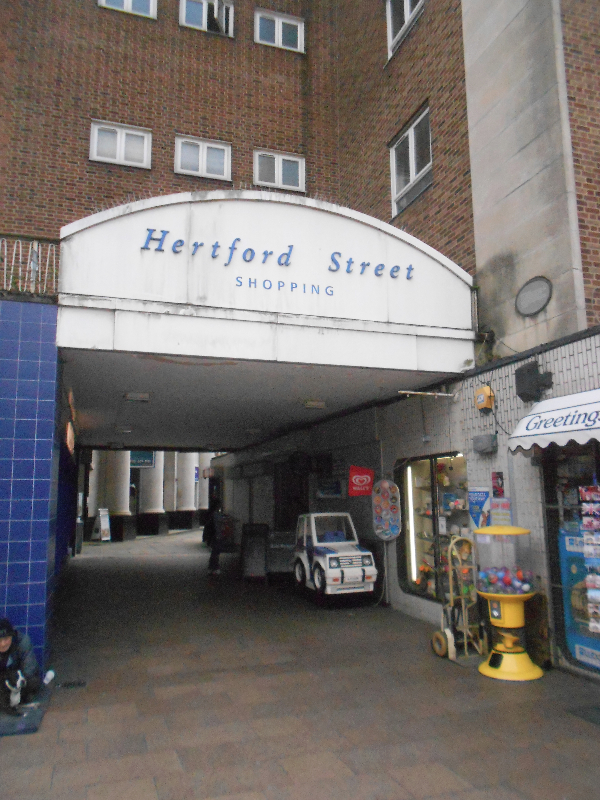
The Martyr’s Mosaic – Broadgate House
The Martyr’s Mosaic is located in the Foyer of the east entrance of Broadgate house, below the Lady Godiva clock and Peeping Tom. Access is gained through a doorway off the tunnel to Hertford Street.

Just behind the child’s truck ride is a entrance to the foyer and the Mosaic
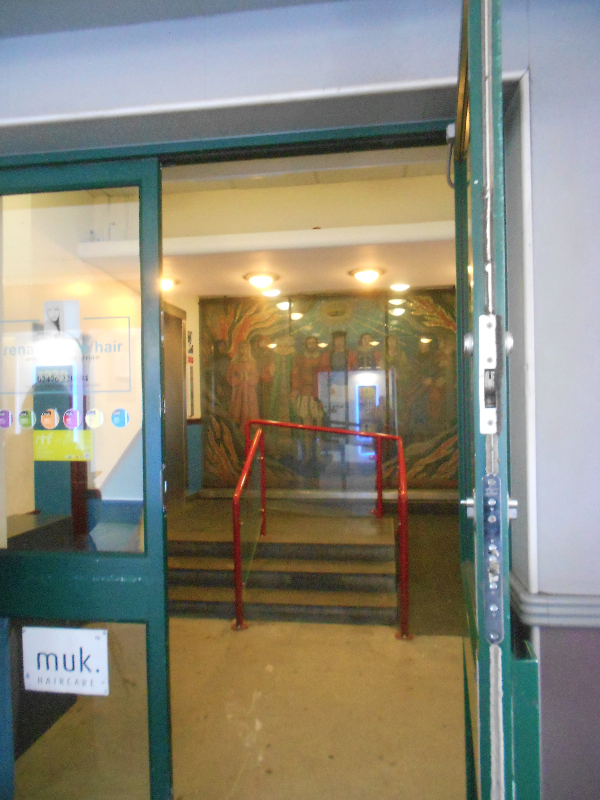
For some reason the lift does not come down to ground level and has three steps up to it, and a ramp and hand rails (though necessary) have interfered with the view of the Mosaic.
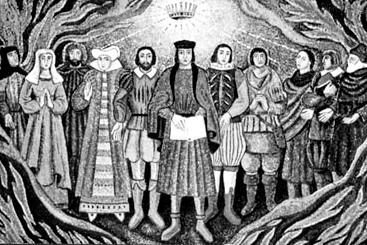
Black and white drawing of the Mosaic The mosaic is difficult to photograph as there is glass in front of it that reflects the light.
Donald Gibson, who designed Broadgate house, wanted there to be lots of public art in the building. He had made the Godiva clock and the People of Coventry sculptures which face out on to Hereford Street. He had this wonderful mosaic made for the foyer of the entrance to the then Bridge Restaurant and offices. Unfortunately over the years various additions of ramps and hand rails have spoiled the view of this impressive work of art.
Read Donald Gibson’s description of the history of the Martyr’s mosaic.
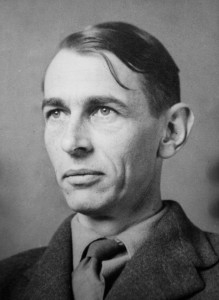
The Martyrs Mosaic was designed by the Head of Coventry College of Art, Hugh Richard Hosking, better known to his friends as Dick Hosking. It was not unusual for Donald Gibson to call on local talented artists to help to add artwork to the new buildings in Coventry. Gibson was inspired to use the mural artform following a visit to the Old Arsenal in Geneva. He arranged for Hosking to visit the city and meet local mosaic artists. In 1951 Hosking visited Geneva to look at the murals and met up with Rene Antonietti. He expressed delight with Antonietti and said that the work would be 50/50 his and Antonietti’s. Read an article from the Journal of Geneva.
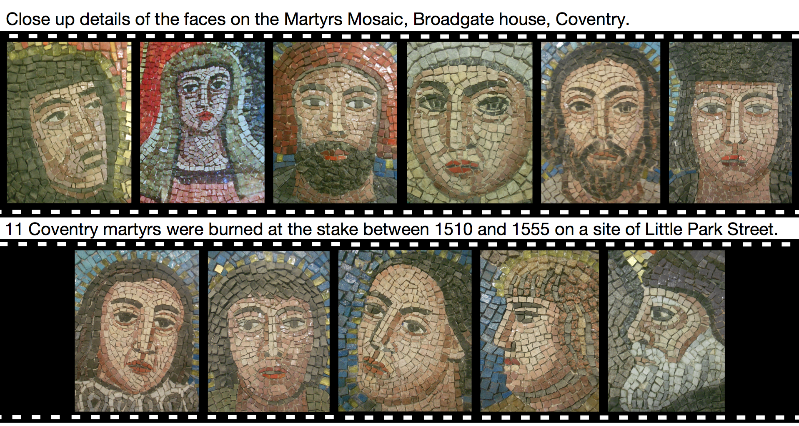
Dick Hosking worked as head of the City Art College from 1947 until 1962. He enjoyed his art, mural painting and teaching. Some of his paintings can be seen in Leamington Art Gallery and the New Wall Museum & Art Gallery, Leicester.

‘Landscape’ painting by Dick Hosking at the Leamington Art Gallery.
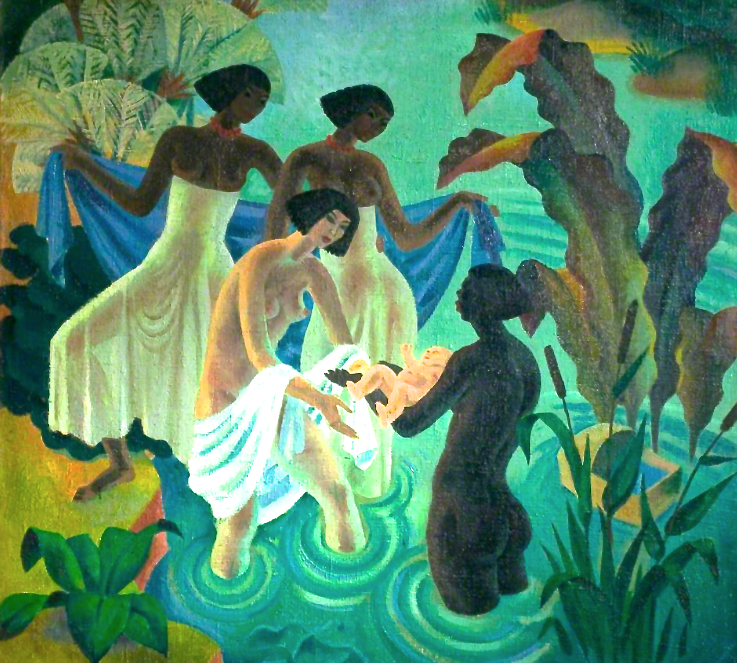
‘Baby moses being found floating in the Nile’ by Dick Hosking at the Leicester Gallery.
Dick’s wife Alma Ramsey Hosking was also a sculptor and artist. She was commissioned by Sir Basil Spence to design and make the Coventry Cathedral Christmas Nativity scene. Alma made them from a resin mixed with copper filings over a chicken wire frame. Costumes were then made to clothe them. They get changed from shepherds to wise men throughout the Christmas season. Their daughter, Sarah Hosking, led a project to restore the figures in 2007.
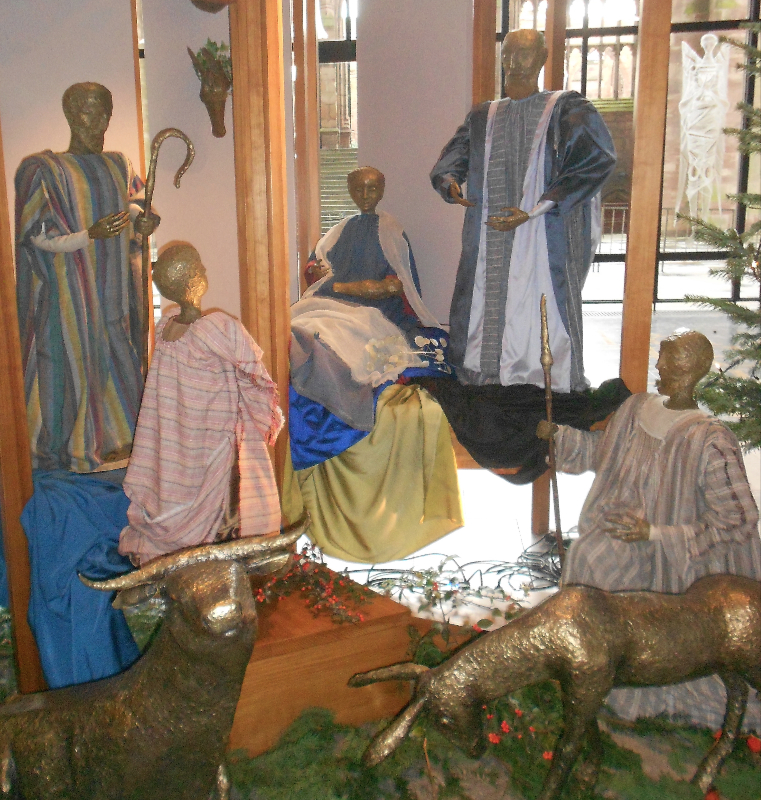
The image on the mosaic is a bit confusing as it shows eleven martyrs being burned at the stake together. But this is not historically correct.
In reality they were not all burned together. There were a number of seperate events between 1511 – 1555 and there were 12 people executed in total. The events took place in Mile Lane, in the Little Park Street area of the city. The location is now marked by a Celtic style Cross, although this was relocated to make way for the Ring Road.
The story being told in the mosaic is the story of the Lollard Martys who were a religious group started by John Wycliff (1329 – 1384). He became the head of a movement that was probably the first recognised opposition to the established Church since the 5th Century. The Lollards, as they became known, were particularly strong in the textile, tanning, dyeing and associated trades, and thus Coventry became a centre of Lollardy. Lollards were opposed to the worshiping of images, did not accept doctrine, were against pilgrimages, and believed that church services should be performed in English.
The Martyrs included Joan Ward (or Washingby). She had previously admitted 20 years of Lollardy, but had abjured in 1495. She had married and left Coventry, but returned in 1511 and resumed her activities. She was condemned as a relapsed heretic and burned at the stake. Master Archer, a shoemaker, went to the stake along with six of his colleagues on 4 April, 1520. (He is missing from the mosaic). Thomas Bond (or Bowen) also died that day, accused like the others, of teaching his children the Lord’s Prayer in English. Master Hawkins is described as a shoemaker, or skinner. Robert Hockett, or Hatchet, or Hatchets has his trade given as a shoe-maker or leather-dresser. Thomas Landesdale or Lansdale, or Lansdail, or Laudersdale continues the clothing motif and has his living given as hosier or tailor.
Joan Smith or Joanna Smyth was perhaps the most unlucky of the seven to die this day. After investigation she was discharged, but then a document was found in the sleeve of her gown. On it was written the Lords Prayer, the Ten Commandments, and the Apostles’ Creed, in English. Upon this being discovered she was immediately condemned and burned with the men. It is likely Thomas Landesdale was her brother-in-law. Robert Silkeby (also named as Silkby, Silkeb, Silkesby, Sylkeby and Dumbleby) was probably considered the prime capture when he was caught with the other seven, but he escaped. He had been a librarian to the sect for some 18 years, keeping tracts and English translations of the Bible. However at the end of 1521 he was recaptured, and on 13 January, 1522, he too went to the stake.
Lawrence Saunders was educated at Eton and Cambridge. He was ordained and granted a bishop’s license to preach, and became associated with the leading reformers. He was burned on February 8, 1555. Robert Glover was born in Mancetter and was also Eton educated. He was married to Mary, niece of Hugh Latimer, Bishop of Worcester, and their eldest son was called Hugh after him. Cornelius Bongey, or Bungey, was a capper from Coventry and burned alongside Robert Glover on 20 September, 1555. He was not famous, just an ordinary man, and in him we see the echo of Tertullian’s words. The blood of the martyrs is the seed of the church.
Many streets have been named after the Martyrs in Coventry mainly in the Cheylemore and Radford areas.
It was an unusual subject for a new work of art in 1952 being only 7 years after the Second World War, but maybe it was a warning about our own history of state torture of people we don’t get on with?
Hopefully when the City Centre South developments improves the opening up the bridge and access to Hertford street from Broadgate, the mosaic can be de-cluttered and shown off to a wider public.
